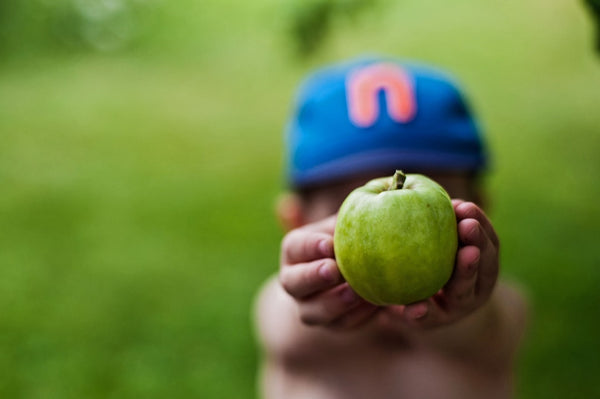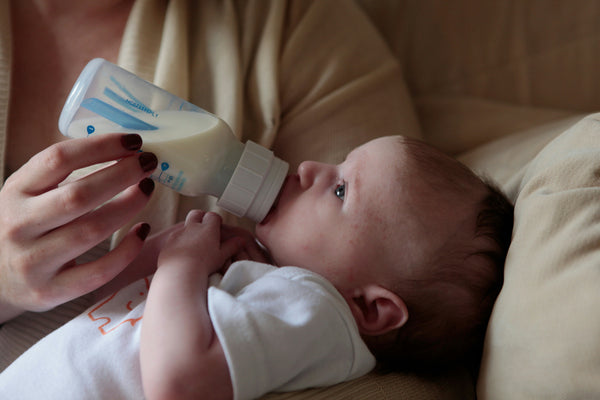What to Do If Your Kid’s Still Constipated After Starting Prebiotics
share this article

When Relief Doesn’t Happen Right Away
You’ve started a daily prebiotic like Growing Up Prebiotics, you’ve been consistent, and you’re doing all the right things but your kiddo is still constipated. It’s frustrating, we get it. While prebiotics are a powerful, science-backed way to support digestion and gut health, sometimes constipation is more complex.
The good news? There are additional steps you can take to support your little one’s gut and help get things moving.
Step 1: Check Your Timeline (and Stick With It)
Prebiotics aren’t a quick-fix. They feed beneficial gut bacteria, which take time to grow and rebalance the microbiome. In the Closa-Monasterolo et al. study, kids taking chicory root inulin (like what’s found in Growing Up Prebiotics) showed gradual improvements over 6 weeks—not overnight [1].
If it’s only been a week or two, keep going. It can take several weeks of daily use before the gut starts responding fully. In the meantime, use these next steps to help support the process.
Step 2: Increase Water Intake
Fiber needs fluid to work. If your kiddo’s prebiotic intake has gone up, but their water intake hasn’t, stool can still be dry and difficult to pass.
Aim for:
-
Water at every meal and snack
-
Diluted fruit juice (like pear or prune) if needed
-
Water-rich foods (e.g., oranges, cucumbers, smoothies)
A helpful tip: if your kiddo is old enough, encourage them to take a few sips of water after consuming their prebiotic dose to help the fiber do its job.
Step 3: Add Natural Motility Boosters
If prebiotics alone aren’t doing the trick, try incorporating foods that naturally support gut motility:
-
Prunes or prune puree
-
Kiwi (shown to support stool consistency in adults and increasingly used in kids)
-
Chia pudding or ground flaxseed
-
Olive oil or avocado (healthy fats help move stool along)
-
Magnesium-rich foods like spinach, beans, and bananas
These foods can complement the gentle, ongoing effects of prebiotics and encourage more immediate motility.
Step 4: Rule Out Withholding
Sometimes constipation isn’t about the gut—it’s about behavior. Kiddos may withhold poop due to:
-
A past painful bowel movement
-
Busy or distracting environments (like school or daycare)
-
Fear of using unfamiliar toilets
If your kiddo is showing signs of withholding—crossing legs, hiding, dancing around, or avoiding the toilet—you may need to address the root cause. A warm bath, stool softeners (if prescribed), or rewards-based potty routines can help break the cycle.
Step 5: Consider Magnesium Supplementation
If your little one continues to struggle despite daily prebiotics, talk to your pediatrician about adding magnesium citrate or a kid-safe magnesium supplement. Magnesium draws water into the bowel and helps relax the intestinal muscles—often used alongside fiber for synergistic effect [2].
Some families benefit from combining magnesium with Growing Up Prebiotics to address both the functional and microbial aspects of constipation.
Step 6: Reassess the Bigger Picture
Chronic constipation may have multiple contributing factors:
-
Low overall fiber intake
-
Low physical activity
-
Food sensitivities
-
History of antibiotics or C-section delivery
-
Gut-brain dynamics (e.g., anxiety, sensory issues)
If constipation persists even after prebiotics, hydration, and diet changes, a pediatrician or pediatric GI may want to evaluate for underlying causes like functional constipation, slow transit time, or pelvic floor issues.
Summary
If your kid is still constipated after starting prebiotics, don’t give up—consistency, hydration, and a few key additions can help unlock results. Most prebiotics, including those in Growing Up Prebiotics, show their full effects by 6 weeks. In the meantime, boost fluids, incorporate natural motility foods, and consider layering in magnesium or behavioral support to help your kiddo feel more comfortable and regular.
















